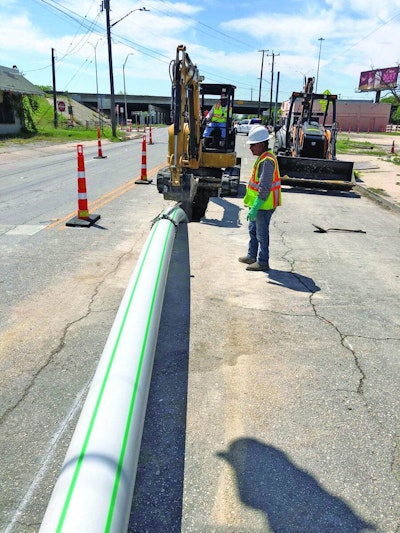
In addition to avoiding significant paving restoration time and costs as well as roadway closures, pipe bursting is one of the few trenchless rehabilitation methods that can upsize a pipe.
Trenchless technology has revolutionized sewer rehabilitation and repair.
One such trenchless method, pipe bursting, is increasingly preferred for small diameter yet large-scale and complex sewer systems, giving old pipes new life without compromising paving or roadway access. But...






